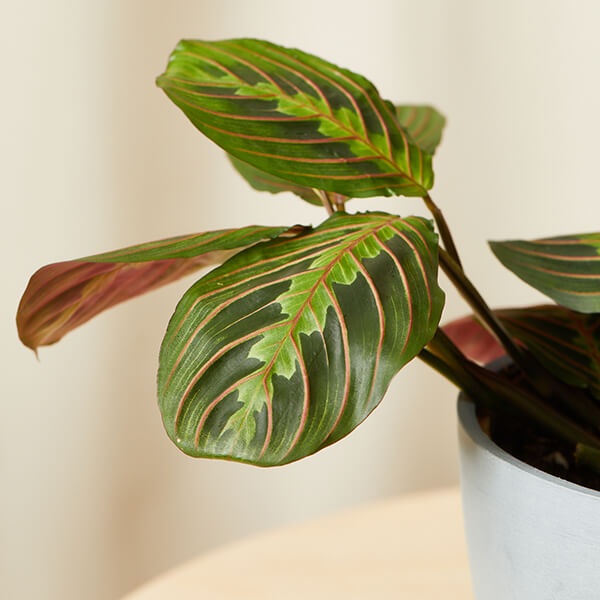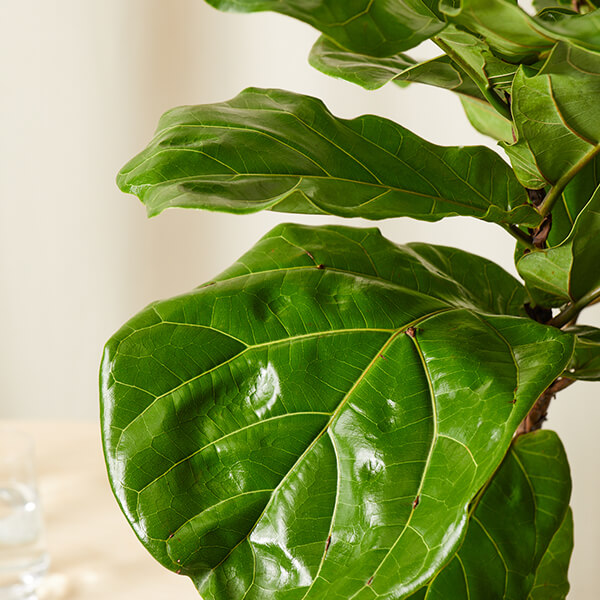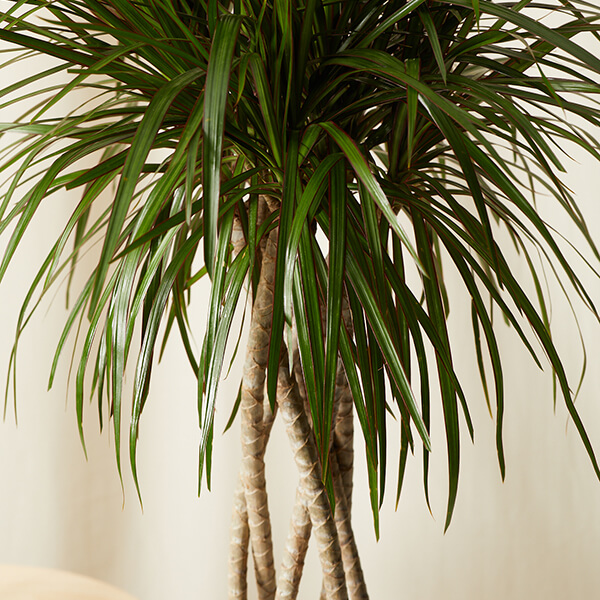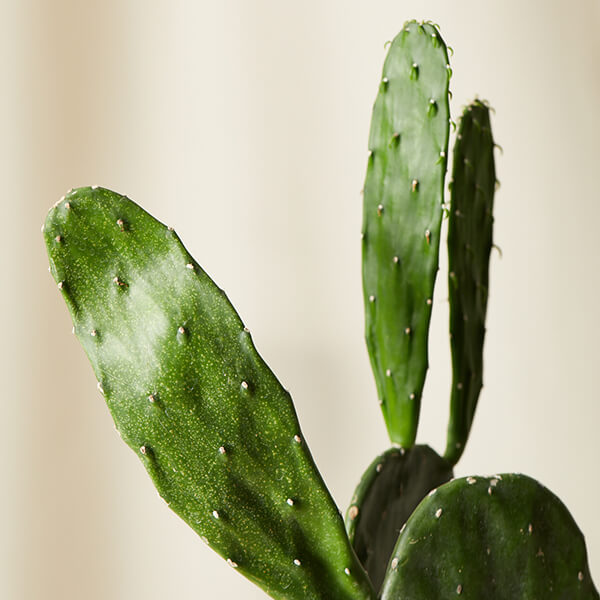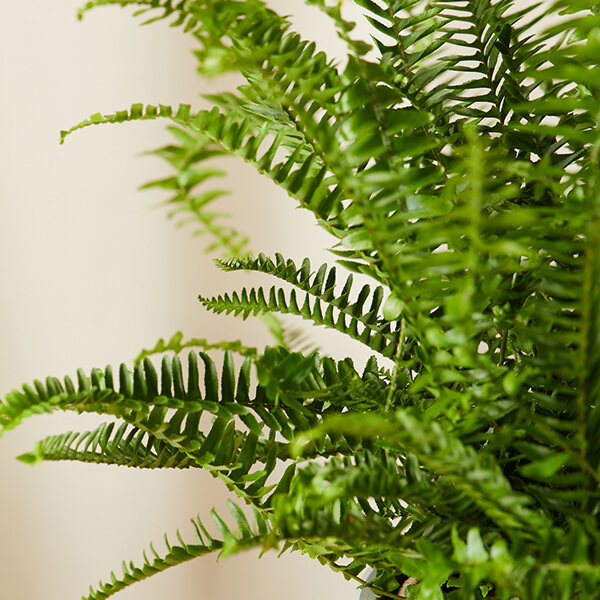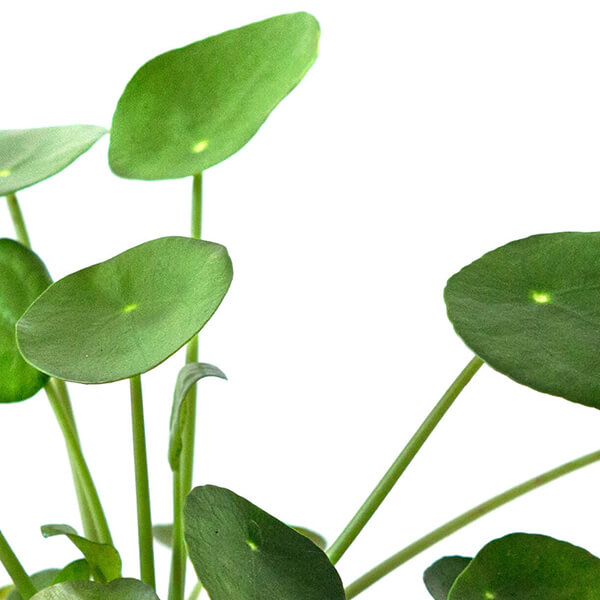Search
119 results found with an empty search
- Prayer Plant | Plantastic
< Back Prayer Plant Light: Your Prayer Plant prefers bright, indirect light. Direct sun can cause the leaves to fade and scorch. Water: Water when the soil volume is 25% dry. Water until liquid flows through the drainage hole and discard any that accumulates in the saucer. Pet-Safe: This plant is considered non-toxic and pet-friendly. Previous Next
- Fiddle Leaf Fig | Plantastic
< Back Fiddle Leaf Fig Light: Keep your fiddle leaf fig in bright indirect light. This plant will not tolerate low light and its leaves will eventually yellow and drop. Close to an eastern window or acclimated to the direct light from a southern window is ideal. Water: Water when 50-75% of the soil volume is dry. Always water thoroughly until it flows out of the drainage hole to encourage a healthy root system. Discard any excess water in the saucer. Pet-Safe: Fiddle leaf figs are toxic to humans and pets if ingested. Previous Next
- Dracaena | Plantastic
< Back Dracaena Light: Your Dracaena prefers bright indirect light but can survive in low light. Leaves with less variegation, slow growth, and small new leaves indicate it is not getting enough light. Water: Overwatering causes root rot and is the main reason a dracaena plant dies. Water your plant thoroughly and allow the top 75% of the soil to dry before watering again. In low light, allow the soil to dry completely before watering. Water your plant less in the winter, when light levels are lower and growth has slowed. Pet-Safe: Dracaena leaves are toxic to pets and humans. Typically, ingestion will cause mouth and stomach irritation with possible vomiting. Previous Next
- Cactus | Plantastic
< Back Cactus Light: Your Cactus needs bright direct light. This means a spot that gets 6 or more hours of direct sun per day, like an unobstructed southern or western window. Water: Water your cactus when the soil volume is 100% dry. Water thoroughly until it flows out of the drainage hole. Discard excess water to discourage root rot. Pet-Safe: This is considered pet friendly, but watch out for spikes! Previous Next
- Fern | Plantastic
< Back Fern Light: Your fern will do best in medium to low light. The more light it receives, the more the leaves will crinkle and the less light, the flatter the leaves will be. Keep in mind, too much light or extended periods of direct sunlight will cause the fronds on the fern to get a pale bleached color. Water: Water when the top 25% of the soil is dry. When watering, water only the soil – not the leaves. Water accumulating in the crown of your plant could lead to bacterial growth and potential leaf rot. Water until liquid flows through the drainage hole at the bottom of the pot and discard any water that has accumulated in the saucer. Pet-Safe: Ferns are non-poisonous plants and safe for humans, dogs and cats. Previous Next
- Pilea | Plantastic
< Back Pilea Light: Your Pilea prefers bright, indirect light. Direct sun may burn the leaves. In order to prevent your Pilea from growing lopsided, rotate it at least 2-3 times a week since it grows towards the sun. This plant can adapt to lower light areas, but the leaves will turn a darker green and the plant will spread out more. Water: Water your Pilea when the top 75% of the soil is dry. Water until liquid flows through the drainage hole at the bottom of the pot and discard any water that has accumulated in the saucer. Pet-Safe: Pilea are generally non-toxic for humans and pets. However, when ingested in very large quantities, they can cause a mild digestive reaction. Previous Next
- Peace Lily | Plantastic
< Back Peace Lily Light: Your peace lily will do best in bright indirect light and can adapt to lower light. Too much bright light will burn the foliage. Too little light and the plant will not produce flowers and foliage growth will slow. Water: Water when 50% of the soil volume is dry. If the plant gets too dry it will dramatically wilt, but a good watering should perk it back up. Water thoroughly until you see it flow out of the drainage and discard excess water in the saucer. Pet-Safe: Peace Lily is considered to be toxic to animals and humans if ingested. Previous Next
- Anthurium | Plantastic
< Back Anthurium Light: Your Anthurium prefers bright indirect light. Direct sun may burn the leaves. The more light the plant receives, the more blooms your plant will produce. Water: Water your Anthurium when 50-75% of the soil volume is dry. Water until liquid flows through the drainage hole at the bottom of the pot and discard any water that has accumulated in the saucer. Overwatering causes yellow leaf tips and underwatering causes brown leaf tips. Pet-Safe: This plant is considered toxic to pets and humans if ingested. Previous Next
- Poinsettia | Plantastic
< Back Poinsettia Light: Poinsettias love bright but indirect sunlight. An eastern window is ideal, or a few feet back from a southern or western window. Watch out for pale bleached leaves as this is a sign your plant is getting too much direct sun. Water: You should water your poinsettia when the top 50% of soil is dry. Water slowly until you see water begin to trickle out of the pot’s drainage hole, and make sure you let excess water fully drain out. Discard any excess water after a few minutes. Pet-Safe: Toxic only if ingested in very high amounts to pets and humans. The sap can be irritating to the mouth and stomach if ingested, sometimes causing vomiting. The sap may also cause a very mild allergic skin reaction in some people. Previous Next
- Croton | Plantastic
< Back Croton Light: Your Croton will do best in a bright spot, as it needs lots of light (if possible 4-6 hrs. Per day) to produce all those colorful leaves! If your croton does not get enough light, you might find the plant grows tall and lanky with spare leaves lacking the rich, dark hues. Water: Water when the top 25%-50% of the soil is dry. Water until liquid flows through the drainage hole at the bottom of the pot and discard any water that has accumulated in the saucer. Pet-Safe: Your Croton is moderately toxic to pets and humans. Typically, ingestion will cause mouth and stomach irritation and possible vomiting. Previous Next
